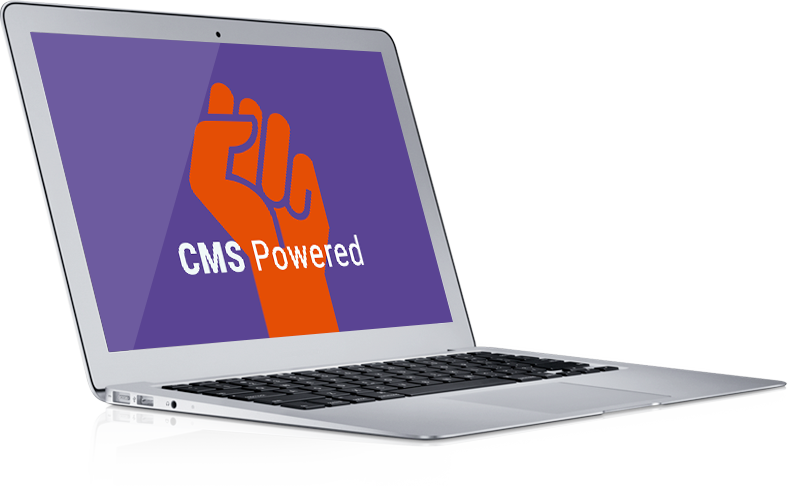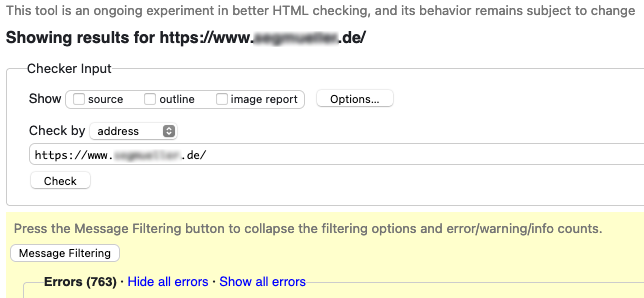
What I do
Websites
A good website puts the visitor first — its potential clients. Studies show that people judge a site’s design in less than a second, and a poor experience can stop around 88% of visitors from returning. That’s why making a solid first impression is so important!
To achieve this, I tailor each website to reflect the client’s brand and personality. I also make sure it’s fast, mobile-friendly, easy to navigate, and engaging enough to hold attention.
Beyond design and usability, I focus on the marketing side by making each site fully SEO Ready to climb the rankings of search engines like Google, Bing, and Yahoo. All my sites are CMS Powered , giving users complete control and reducing dependence on third parties. I also offer translations and maintenance, so your website continues to work smoothly and reach a wider audience.
I will elaborate on all of these features in the following articles below.
Tailor-made
Besides making a website FAST, I focus on making it trustworthy and engaging by reflecting the client’s brand — from logos and stationery to colours. When appropriate, I add smooth transitions, animations, and interactions to capture attention, increase user engagement, and even help SEO rankings.
I do not use third-party templates. Many developers and agencies buy a template for €30 and sell it for €1,000 — often for basic websites. While tempting, I prefer creating custom solutions that are reliable, unique, and fully under your control. Creating a tailor-made website ensures your online presence is unique, secure, and fully optimised.
Did you know?
Around 75% of internet users judge a company’s credibility by its website design — and for health-related sites, that rises to 94%.
Why I avoid third-party templates.
Third-party templates (not WordPress’s built-in ones) may seem convenient, but they can bring risks:
No reliability, no surprises, no extra costs.
No reliability: Using a third-party template puts your website’s fate in someone else’s hands — sometimes several people’s hands. If something breaks, you’d need to contact your developer, who then has to rely on the template provider to fix it. This can take time and be stressful. Plus, there’s no guarantee the provider still offers support or is reliable.
No surprises: That’s why I prefer to build websites from scratch. It reduces unexpected issues, like a theme developer going out of business. In such cases, fixing the problem would fall to the developer — ideally someone experienced enough to handle it efficiently. Many third-party providers do offer support, but often only for a limited period. Extending it usually means signing up for a monthly or yearly plan.
No extra costs: Both scenarios — paying your developer for extra work or subscribing to extended support — can create unexpected expenses. By creating a tailor-made site, these surprises and costs are minimised, giving you full control and peace of mind.
Too many bugs and errors damaging SEO.
Many third-party templates (and their plugins) can contain hidden bugs and errors. These issues can slow down your website, make it less user-friendly, and negatively impact your SEO.
Modern browsers can often correct small errors, but I’ve seen websites built with third-party templates having 700–1,500 errors on a single landing page. That kind of code can seriously affect performance and should be avoided.
By developing websites from the ground up, I know exactly where to focus for speed, optimisation, and clean, reliable code. Every site is carefully checked and refined to ensure it’s efficient, user-friendly, and SEO-ready. You can read more about this in the ‘Clean Code‘ section.
Chance of viruses and malware.
Many websites offer free templates — but as the saying goes, “There’s no such thing as a free lunch.” Often, these free templates come with hidden costs.
Out of curiosity, I tested a few free templates and noticed my internet connection slowing down. Upon inspection, some templates contained cryptocurrency-mining malware embedded in the code.
While such cases are rare, they highlight the risk of using unknown templates. It’s always worth asking your developer where a template comes from and ensuring your site is secure.
You can read a more detailed article about this here.
Too passionate about web development.
The main reason I avoid templates is simple: I love what I do. Templates don’t allow me to fully express my creativity or bring the ideas I have to life.
By building websites from the ground up, I can dive deeper into a company’s brand and translate it into a unique, compelling website. This approach creates a stronger online identity, makes the site more trustworthy, and ultimately provides greater value to the business. Turning a concept into a fully functional, customised website is where I find both my challenge and my passion.
Fast
We live in a world where everything feels like it needs to happen instantly — and websites are no exception. If a website is slow or unclear, visitors will quickly move on to a competitor. Research shows that users often leave if a site doesn’t load within two to three seconds, meaning potential customers can be lost before they even see your content.
I focus strongly on website speed to keep visitors engaged and reduce the chance they’ll leave for a competitor.
Speed also affects your online presence. Google has stated that faster websites rank higher, while slower ones can be penalised. That said, speed should never come at the expense of content quality (Onpage SEO) or relevance (Offpage SEO).
I aim to find the right balance: websites that are fast, engaging, and visually appealing. Visitors care just as much about design, which I cover more in the ‘Tailor-made‘ section above. For more on Google’s guidance about site speed, click here.
SEO Ready
When I hand over a website, it will be fully SEO Ready. That means the site follows all essential rules of major search engines like Google, Bing, and Yahoo. These are mainly the technical aspects of SEO that are often too complex for users to handle themselves, forming the foundation for a successful SEO strategy.
So, what is SEO?
SEO stands for Search Engine Optimisation — the process of improving the quality and quantity of traffic to a website from search engines. It has three main components:
On-page SEO
Optimising content, headings, images, and internal links.
On-page SEO is about optimising webpages for search engines. The most common practices are title tags, content, internal and external links. Search engines look at the content of a page to determine whether it is relevant enough for their search query. They do so, among others, by analysing its keywords.
“The most basic signal that information is relevant is when a webpage contains the same keywords as your search query. If those keywords appear on the page, or if they appear in the headings or body of the text, the information is more likely to be relevant.” – Google.
But it does go a bit deeper than that. Search engines also look for other relevant content on the page. If your page is about dogs and you do not mention different breeds, Google knows there are probably more relevant results out there. Here is what Google says next:
“Just think: When you search for ‘dogs’, you probably don’t want a page with the word ‘dogs’ on it hundreds of times. With that in mind, algorithms assess if a page contains other relevant content beyond the keyword ‘dogs’ – such as pictures of dogs, videos or even a list of breeds.”
Personally, I found that using synonyms is also a great way of getting a large variety of keywords onto your page. That is where websites like thesaurus.com can be quite a powerful ally for writing deliberate content.
Another great way to implement a great variety of keywords into your website is by using a blog. They say that websites with regularly published blog posts get 350% more traffic than those that do not publish content regularly.
In the future, I will write my thoughts and experiences about SEO in the blog ‘learning’ section. Until then, if you want to learn more about Online SEO and how to use this on your website, check out this website.
Off-page SEO
Building authority through backlinks and external signals.
Where Online SEO takes place within your website, Offline SEO takes place outside your website. It’s when other websites direct traffic from their website to your website by using external links, also called ‘hyperlinks’. Hyperlinks that link to your website will increase your website’s popularity on Search Engine Result Pages (SERPs).
It’s a bit like: “The more people talk about you, the more popular you must be”. And who doesn’t want to hang out with the cool guys in class, right? And if it’s these cool guys themselves who are talking about you, that is even better!
Search engines look at this popularity as being a good sign. A sign that your website is trustworthy and relevant. And the more popular these websites that mention you are, the better your website online presence will be.
For example, getting more reviews on Google or Yelp can adequately increase your SEO. But also Facebook and Instagram posts with links directing to your website will have very positive effects.
There is, however, also something to be aware of, namely that a website still needs to be technically “correct”. A website can have dozens of links directing to your website. But if this website, or your website itself, is messy and untrustworthy, search engines will ignore it. Something that will occur when websites do not apply to the technical features of SEO.
And this is when ‘SEO Ready’ comes into the story.
Technical SEO
Ensuring website structure, speed, and code meet search engine standards.
Technical SEO is the foundation of search engine optimisation. It is where it all starts. You can have implemented the best Online SEO techniques or directed dozens of external links with Offline SEO. If your technical SEO is unstable, so will be your SEO results.
At best, this might result in missed opportunities to reach customers and search engines with information. But at worst, your site might be entirely inaccessible to search engines and customers. In order to start with your online presence, your website needs to be ‘SEO Ready’ first by ensuring that your technical SEO is close to perfect.
So, what is technical SEO exactly!?
Technical SEO is about optimising your website and hosting server to make it easy for search engine robots to crawl through and index your website so it can be ranked. When robots crawl through your website, they will go through various technical elements, such as page speed, content, site structure, mobile-friendliness and validation errors.
When your website is considered problem-free and thus SEO Ready, the road is clear for you to start on your Onpage and Offpage SEO.
A great way to work on your Onpage SEO for tailoring your content and boost your SEO would be by using a Content Management System (CMS). I use WordPress for all my websites. A topic I will further discuss in the next chapter ‘CMS Powered‘.
SEO is time-consuming and requires careful research and attention to detail. Don’t worry — I’ll guide you on how to implement these techniques effectively, so your website stands out online.

Did you know?
Around 67% of all the clicks go to the first five search results.

Did you know?
As of 2025, WordPress powers more than 43%, or 478 million, of all the websites found on the internet today.
CMS Powered
ll my websites are built using WordPress, a CMS (Content Management System). A CMS lets you create, edit, and manage your website content without any technical expertise. The interface is similar to writing in Microsoft Word, allowing you to add text, images, headlines, meta descriptions, and other SEO features with ease.
In today’s fast-moving digital landscape, a CMS makes it simple to tailor your content for a more personalised customer experience.
Benefits of a CMS:
- Be in complete control of your website
- Save time with an easy workflow
- Simple to use and manage
- Reduce reliance on third parties and extra costs
Investing in a CMS is one of the most effective ways to strengthen your business’s online presence.
Clean code
I believe a website’s code should be as close to error-free as possible. Every site I deliver is validated — meaning it meets standards defined by organisations like major search engines. Clean code isn’t just about perfection; it’s your right as a client. Think of it like buying a car: you expect it to be in top condition.
Many websites online contain hundreds or even over a thousand errors on their landing pages alone — issues that often go unnoticed by most clients, just like how you rarely look under your car’s hood.
Modern browsers can correct many errors, but excessive issues slow down your site, frustrate visitors, and hurt SEO. By keeping code clean, websites load faster, are easier to manage, and rank better in search engines.
During development, I regularly check for errors and validate each website before handover. When validated, the site is technically ready and fully prepared to succeed online.
Translation
Do you run a hotel, a holiday home, or business and want your website in multiple languages?
Having a website in different languages allows you to reach a wider audience and attract more potential customers. It also makes your business appear more professional and credible, setting you apart from competitors. Additionally, multi-language sites have a better chance of being picked up by international search engines, which can boost your online presence and improve your rankings.
Thanks to AI, we can now translate your website into any language, accurately and efficiently. I can help you reach new markets, expand your audience, and take your business to the next level — all while maintaining the quality and tone of your content.


Need to add, fix, or change something on your website?
I can help. Whether you’re unsure how to update content, make design changes, or fix issues, I’m familiar with various content management systems and can work directly on your site when needed. Just get in touch — I’d be happy to assist.
Website care
Websites, like all digital technology, evolve over time. New programming languages, updated browsers, and more powerful devices can sometimes cause older sites to behave unexpectedly or display incorrectly. This usually happens gradually over several years, depending on how complex the website is. Simple sites with text and images are easier to maintain, while feature-rich sites may require more attention.
If your website is acting a bit off or not appearing as it should, it might need some TLC. I take pride in keeping websites healthy, functional, and up to date — because your website deserves the same care as any valuable asset.
